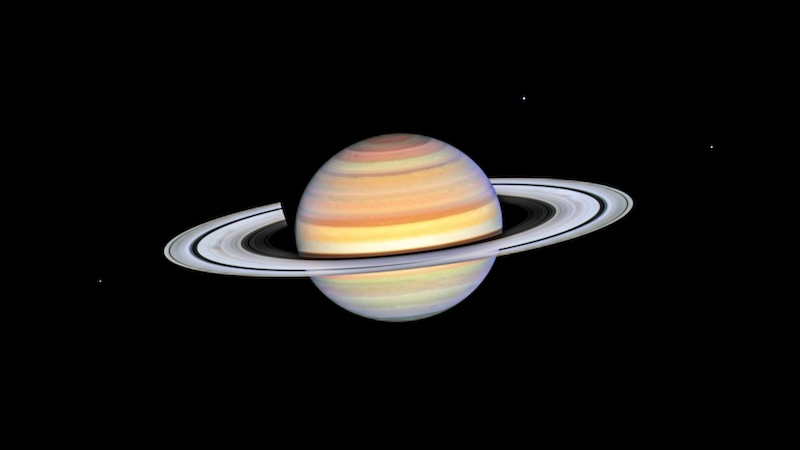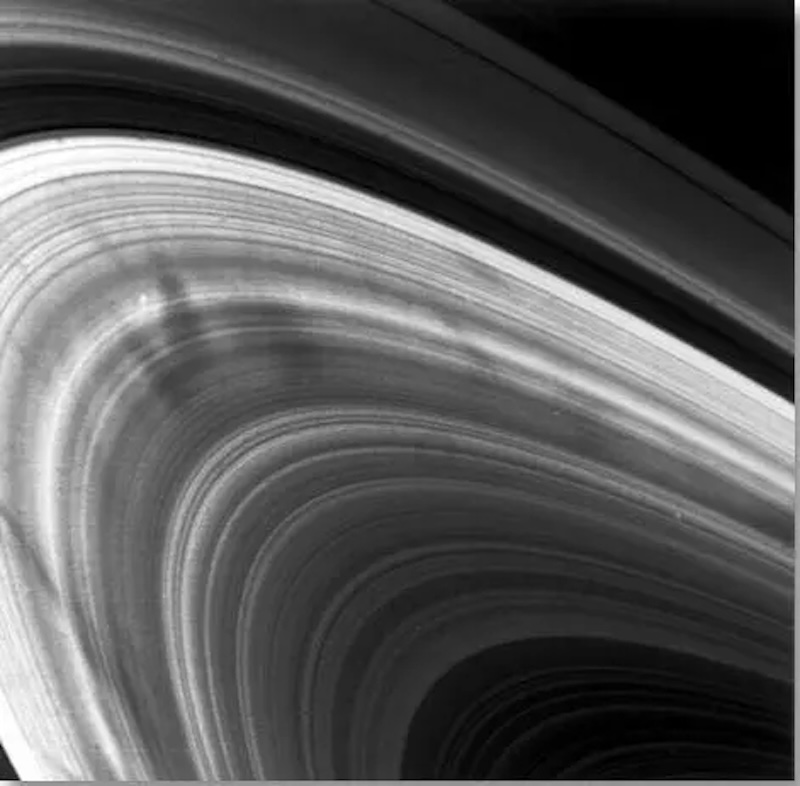It’s spoke season on Saturn! This Hubble time-lapse from October 22, 2023, shows the spokes in the rings on both sides of the planet. The video zooms into one set of spokes on the morning (left) side of the rings. Video via ESA/ NASA/ Amy Simon (NASA-GSFC)/ Animation: Joseph DePasquale (STScI).
Spoke season on Saturn
Saturn, with its magnificent rings, is known as the jewel of the solar system. But did you know that the rings have “spokes” in them? The spokes are fainter, transient features that appear as ephemeral structures in the rings. Now, NASA’s Hubble Space Telescope has taken new images and time-lapse video of this fascinating phenomenon. NASA said on December 21, 2023, that Hubble watched Saturn during “spoke season,” monitoring the cycle of the spokes as they come and go.
The 2024 lunar calendars are here! Best New Year’s gifts in the universe! Check ’em out here.
Hubble observes spoke season in Saturn’s rings
Hubble was observing Saturn last October when it saw the spokes. The new images show the faint spokes on both sides of the planet simultaneously. The spokes rotate along with the rings around the planet. Although small compared to Saturn, the spokes can be both longer and wider than Earth.
The features are short-lived. Typically, they vanish after only two or three rotations around Saturn. New spokes, however, continue to form.
NASA’s Voyager 2 spacecraft was the first to photograph the spokes, back in 1981. And, of course, scientists have been intrigued ever since. NASA’s Cassini spacecraft, which orbited Saturn for many years, also saw them. Its mission ended in 2017.
A seasonal phenomenon
The spokes are seasonal. Hubble has seen this annual cycle before, as part of its Outer Planets Atmospheres Legacy (OPAL) program. That program monitors weather patterns not just on Saturn, but also on Jupiter, Uranus and Neptune. Hubble confirmed that the number and visibility of the spokes vary with the seasons. Saturn has seasons just like Earth, but with one big difference: its seasons last for about seven Earth years.
Right now, the equinox is approaching on Saturn. That’s a period of increased spoke activity, so it’s an ideal time to observe them. Amy Simon of NASA’s Goddard Space Flight Center in Greenbelt, Maryland, is the OPAL program lead scientist. She said:
We are heading toward Saturn equinox, when we’d expect maximum spoke activity, with higher frequency and darker spokes appearing over the next few years.
Saturn’s equinoxes occur approximately every 15 Earth years, and the next one will happen on May 6, 2025.

How do the spokes form?
The spokes are certainly mysterious-looking, like ghostly pointers stretching across the rings. But how do they form? Scientists still aren’t completely sure, but they have theories. No single theory perfectly explains the spokes yet, but the primary one has to do with Saturn’s powerful magnetic field. As Simon noted:
The leading theory is that spokes are tied to Saturn’s powerful magnetic field, with some sort of solar interaction with the magnetic field that gives you the spokes.
This also ties in with Saturn’s seasons. During equinox, both Saturn itself and the rings are tilted away from the sun by a lesser amount than they usually are. This means that the solar wind from the sun could interact with the magnetic field more strongly, thus producing more spokes. That interaction creates electrostatic forces that can levitate dust and ice above the main ring plane. As a result, they form separate features that hang just above the rings themselves. Those are the spokes.

Bottom line: NASA’s Hubble telescope has recently observed spoke season in Saturn’s rings. The spokes are ghostly transient features that appear and disappear seasonally.











